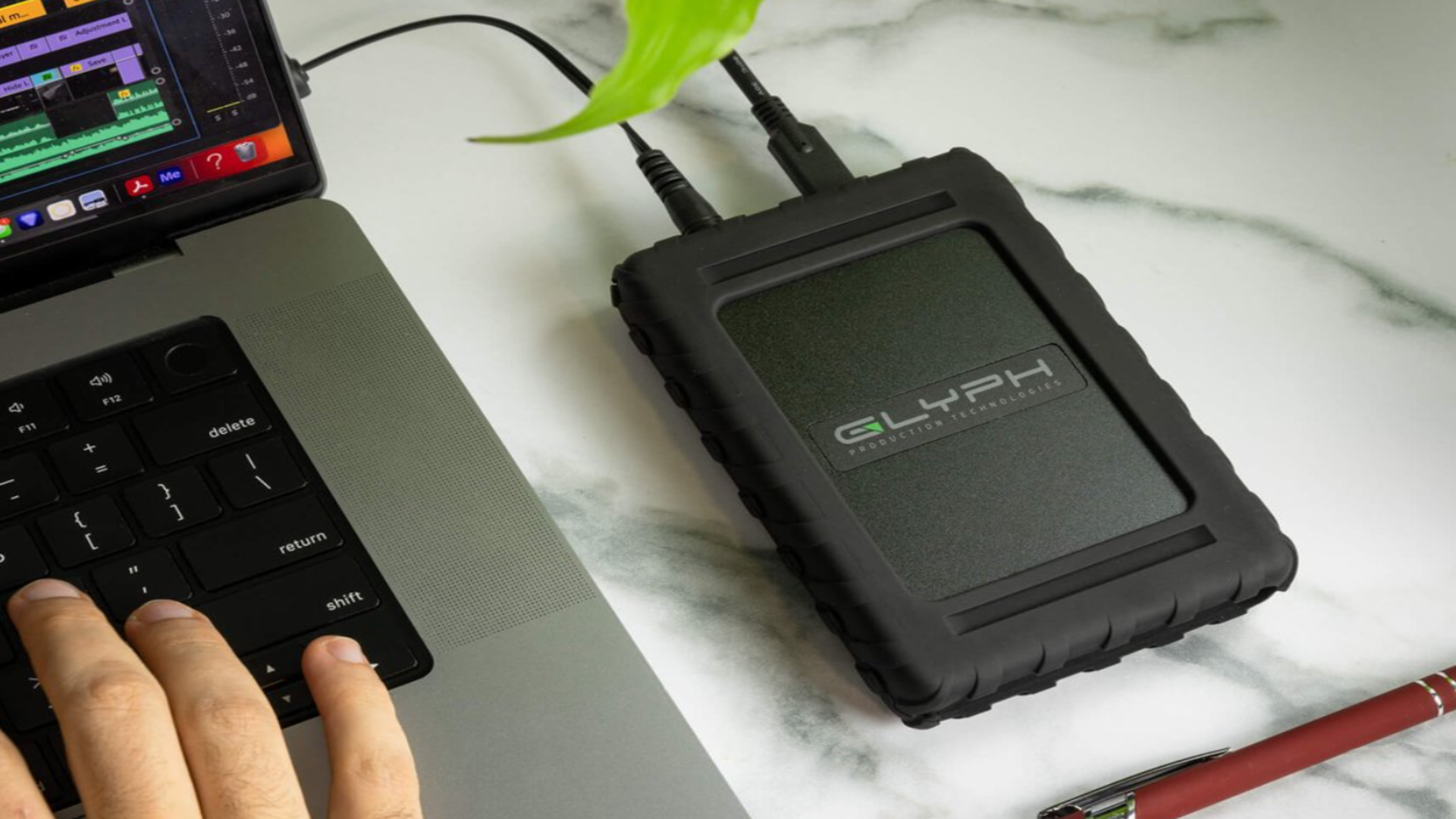Largest SSDs and hard drives of 2025
The largest SSD and hard drive options together on one page

Finding the largest SSD and hard drives can be a challenge with technology and innovations rapidly changing the state of play. We checked out which are the largest internal and external drives you can get right now and whether biggest is best.
Even with limitless online storage, nothing beats physical storage for saving high-volume files, games, large videos and other high-quality media. These devices are also well-placed and well-spaced to form part of any secure backup process.
We've tested the best SSD and best hard drive, benchmarked some of the fastest hard drives and fastest SSDs. Now, we're comparing the largest SSDs and hard drives on the market right now. We've looked at the top deals on units that balance portability, speed, and that all-important storage capacity at the best value price.
And we have some big changes in our rankings, with new entries on the leaderboard for SSDs and HDDs.
- Largest SSD: 245.76TB Kioxia LC9
- Largest HDD: 36TB Seagate Exos M
- Largest external SSD: 30.72TB Glyph Blackbox Plus
Today's best deals
Backup large drives online with cloud storage
IDrive, the cloud backup veteran, delivers tons of storage online for an incredibly small outlay. 10TB for $4.98 for the first year is unmatched till now and so is the support for unlimited devices and the extensive file versioning system available. Even the biggest SSD or HDD need a cloud storage to secure data.
The largest SSDs and biggest hard drives in 2025
Why you can trust TechRadar
We've tested countless storage devices looking for the largest SSD and hard drive models and we've brought together our top picks in every category below. Note that we've only accounted for those which can be purchased, rather than those that have just been announced.
The largest SSD on the market
The Solidigm D5-P5336 (SBFPF2BV0P12OP1), the biggest SSD on sale right now. I have been waiting for that product for nearly a year now and it has finally gone on sale. Like all other drives of this size, it is aimed at the exploding data centre market with AI being the main catalyst.
Unlike the drive it replaces, the D5-P5336 is widely available and it retails for as low as $13,500 at the time of writing. That is less than $110 per TB, almost five times cheaper than the previous record holder, the ExaDrive and only about 50% more than the price of the cheapest SSD on a per-Terabyte basis (this Colorful 2TB SSD retails for $115).
It is significantly faster, by an order of magnitude, than its ExaDrive rival SSD with a PCIe Gen4 interface and speeds of up to 7GBps (read) and 3GBps (write). It is available in E1.L and U2 form factors only and has an endurance of up to 134.3 Petabytes Written, that's equivalent to the drive being rewritten more than 1000x over five years.
Other 122.88TB SSDs include models from Micron (6600 ion) Dapustor (J5060), Kioxia (LC9), Sandisk (SN670), Innodisk, Phison (Pascari D200V, Pascari D205V, a PCIe 5.0 part) and Samsung (BM1743).
I have not added DFM (Direct Flash Modules) from Purestorage (up to 300TB in 2026) to this list as they are proprietary solutions that can't be used elsewhere. Like Purestorage, Huawei has a bespoke 128TB SSD that can only be used in its OceanStor Pacific 9950.
Note that the largest SSD right now is the just announced 245.88TB Kioxia LC9. Sadly, you won't be able to purchase it for the foreseeable future. SK Hynix and Sandisk are also expected to launch similar capacity drives in 2026.
Phison Pascari X200: When you're dealing with enterprise technology or a high-capacity data center, you need to be able to count on your storage. Built to suit enterprise workloads, Phison's Pascari X200 SSD offers unmatched PCIe Gen5 performance, reliability, and efficiency. With cutting-edge technology, Phison is providing innovative solutions for high-density, high-performance, and energy-efficient storage at scale.
Largest portable SSD
Glyph shocked me a few weeks ago with the launch of a 30.72TB external SSD. The Blackbox Plus U.2 External SSD doesn't come cheap at $5,800 but the premium is largely justified by the fact that it is not a normal M2 SSD shoved in a portable enclosure.
Indeed, this is a U.2 class SSD, a format I associate with data centres and rack servers. How Glyph managed to engineer such a drive, I might ask them one day. And it is not cheap. A single 30.72TB drive costs about $3,400.
Just bear in mind that this still requires an external power supply despite being powered by a USB port with Thunderbolt 3 compatibility. It is not bus powered.
Glyph says that it will reach up to 1GBps in read/write and its rubber-wrapped aluminum shell also acts as a heatsink. It is a rugged drive but is not IP-rated (so don't dunk it in a bucket of water).
Every Glyph drive comes with a 3-2-1 warranty. Three years of full hardware coverage, including the cables, two years of Level-1 data recovery, and one year of advanced replacement.
Glyph has smaller capacities (7.68TB and 15.36TB) available for $620 and $2200, respectively from specialist retailers.
Honorable external 16TB SSD mentions include:
The largest HDD on the market
Specifications
As of December 2025, the largest hard disk drive released has a capacity of 36TB. Seagate added the Exos M (ST36000NM003K) 36TB hard disk drive to its Exos Mozaic 3+ range and has talked about future hard drives reaching 150TB. End users can't buy those yet as Seagate has prioritized Cloud Service Providers (CSP) and hyperscalers.
The new drives use ten HAMR-infused platters of 3.6TB each and should be compatible with existing hardware. We don't know what the pricing is yet but I expect it to cost about $800 should it ever go on sale on popular online retailers. Note that it pops up online from time to time as refurbished models.
Now, if you want to buy the biggest hard disk drive right now and don't want to wait, then Seagate has a 30TB Exos M drive for just under $700.
Looking instead for a desktop hard drive, how about a 28TB external hard drive, the Expansion STKP28000400, on sale for $390 at the time of writing. That's under $14/TB, some of the lowest prices we've ever seen to date outside of sale events.
If that wasn't good enough, Seagate also includes free data recovery services with its drive to help you recover your files should the Expansion give up the ghost. Nice gesture.
Rivals to Seagate are few. In WD's sprawling portfolio are 28TB, 30TB and 32TB models, part of the Ultrastar DC HC680/HC690 range. You can't buy them direct so you will have to contact WD directly should you want to acquire one.
Toshiba confirmed that it will launch 30TB and 32TB models but has not set a launch date.
The largest portable HDD on the market
Hard disk drives are cheap and offer plenty of capacity but they are bound to disappear in a not-so-distant future. Right now, the biggest portable hard disk drive has a capacity of 6TB; meet the WD My Passport 6TB. It uses a special drive that is slightly bigger than a standard laptop HDD. So don't even think of removing it.
Western Digital has many models of that capacity starting from under $170 and spread across multiple categories: the G-Drive ArmorATD, the My Passport (Ultra, For Mac), the WD_BLACK P10, Elements (and Elements SE) and finally Easystore.
Sadly, given the lack of new products, it seems that hard drive manufacturers have given up on portable and laptop hard disk drives altogether. Given that the sweet spot for external HDD capacity is 4TB and with no 7TB 2.5-inch HDDs planned, portable HDDs are likely to disappear rapidly when cheap large, capacity external SSDs hit this capacity point and come down in price later this decade.
Largest M.2 SSD
I have removed the 15.36TB Teamgroup QX SSD as it has been retired. SATA drives in general, are now considered obsolete having been superseded by NVMe models for laptops.
If you want high capacity and high performance, there are seven consumer PCIe SSDs available for purchase:
- Samsung SSD 9100 Pro
- XPG/Adata 8TB Gammix S70 Blade
- KingSpec XG7000
- Lexar NM790
- Lexar PLAY
- Sabrent 8TB Rocket 4 Plus
- WD_black SN850X and SN850P
- Teamgroup MP44
- Inland Performance Plus
- Fantom Drives VENOM8
- Corsair MP600 Pro/XT.
I am not considering the Samsung 870 QVO as it is a SATA model.
They all retail for anything between $650 and $1200 or more and deliver similar performance (around 7,000MB/sec, 6,100MB/sec for sustained read/write respectively). At the time of writing, there's no Gen 5 SSD of this capacity or indeed, any widely available PCIe SSDs with a larger capacity.
For this category, I chose the WD_BLACK SN850P because, at the time of writing, it is the cheapest of the lot. I am of course hoping to see large capacity PCIe 5.0 SSDs as well.
Largest removable storage
SSDs tend to get the limelight when it comes to storage technology but the sobering reality is that a lot of data worldwide is archived and lives in cold storage, media that requires hours, if not days before it is accessible.
Enter tape or more specifically LTO (Linear Tape-Open), a tape technology currently in its 10th iteration that offers up to 30TB capacity on a data cartridge and up to 75TB compressed.
Tape though comes with many caveats; the average price of the drives is exorbitant - in the thousands of dollars. It is a linear storage technology which means that it can take time to retrieve the data stored but it works great for backup and is popular with cloud storage providers.
However, if your data requirements are in the petabytes and you care more about archival than immediate access, then tape can be a pretty compelling alternative.
Since my last update, the price of LTO-9 tape is now cheaper than LTO-8 at about $5 per TB. That said, LTO-9 drives still carry a significant premium and therefore, I would still choose the previous generation LTO-8 for my archival needs. A 18TB tape for as little as $88 or just under $5 per TB. It offers native transfer speed rates of 400MBps and supports 256-bit AES encryption by default.
A quick back-of-the-napkin calculation shows that you are likely to reach parity at around 486TB for tape. 27 tapes and an LTO-8 tape drive (about $4,899) will cost you roughly the sameon a per TB basis as 19 external 28TB HDD (at $370 a piece), as of December 2025.
Sign up to the TechRadar Pro newsletter to get all the top news, opinion, features and guidance your business needs to succeed!

Désiré has been musing and writing about technology during a career spanning four decades. He dabbled in website builders and web hosting when DHTML and frames were in vogue and started narrating about the impact of technology on society just before the start of the Y2K hysteria at the turn of the last millennium.







